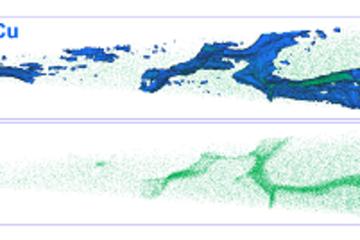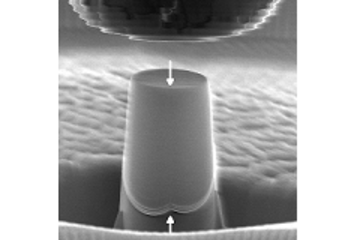All genres
41.
Talk
Eigenspannungen am Hummerexoskelett. Sitzung des FA 13 Eigenspannungen am AWT, IFW Dresden, Germany (2007)
42.
Talk
Residual Stresses in the Exoskeleton of a Homarus americanus Lobster. MECASENS IV, Wien (2007)
43.
Talk
Nonlinear Elastic Effects in Group III-Nitrides: From ab-initio to Finite Element Calculation. 17th International Conference on Computer Methods in Mechanics CMM-2007, Spala, Poland (2007)
44.
Talk
Nonlinear Elastic Effects in Group III-Nitrides: From ab-initio to Finite Element Calculation. 17th International Conference on Computer Methods in Mechanics CMM-2007, Spala, Poland (2007)
45.
Talk
Nonlinear Elastic Effects in Group III-Nitrides. Spring meeting of the German Physical Society (DPG), Regensburg, Germany (2007)
46.
Talk
Theoretical elastic constants of α-chitin. 1. Harzer Ab initio Workshop, Clausthal-Zellerfeld (2006)
47.
Poster
Quantum-mechanics-based study of multi-scale elastic properties of hierarchical biocomposites. Prospects of bionics for functional Materials Science, Montan University Leoben, Leoben, Austria (2010)
48.
Poster
Ab initio based study of multi-scale elastic properties of hierarchical biocomposites. Psi_k Conference 2010, Berlin, Germany (2010)
49.
Poster
Arthropod cuticle: A biological multi-functional composite used as template for nano-to-macro-scale hierarchical modeling. Materials Science and Engineering 2010, Darmstadt, Germany (2010)
50.
Poster
Hierarchical modeling of the mechanical properties of lobster cuticle from nano‐ up to macroscale: The influence of the mineral content and the microstructure. 4th International Conference on Multiscale Materials Modeling, Tallahassee, FL, USA (2008)
51.
Poster
An ab-initio study of hardness anisotropy of crystalline alpha-chitin. Euromat 2007, Nürnberg,Germany (2007)
52.
Poster
Hardness anisotropy of crystalline alpha-chitin: An ab-initio based conformational analysis. Spring meeting of the German Physical Society (DPG), Regensburg, Germany (2007)
53.
Poster
Nonlinear Elastic Effects in Group III-Nitrides. Mid-term Review Meeting of PARSEM, Berlin, Germany (2007)
54.
Poster
An ab-initio study of hardness anisotropy of crystalline alpha-chitin. International Max-Planck Workshop on Multiscale Modeling of Condensed Matter, Sant Feliu de Guixols, Spain (2007)
55.
Teaching
Ab-initio based multi-scale approaches to the elasticity of metallic polycrystals and hierarchical biocomposites. Lecture: XI National Congress on Theoretical and Applied Mechanics, Borovets, Bulgaria, September 02, 2009 - September 05, 2009
56.
Teaching
Micromechanics of Metallic Crystals and Fresh Lobster. Lecture: Lecture at MPI für Mikrostrukturphysik, Halle, Germany, 2006
57.
Teaching
Principles to design and simulate hierarchical materials with property-relevant structural features.











